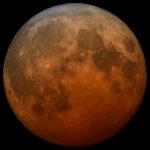NASAの今日の1枚は、無人探査機OSIRIS-RExが地球に向けて小惑星ベンヌに別れを告げるシーンです。
日本国内では「はやぶさ2の技術を導入した」とか「アメリカ版はやぶさ」といった報道がなされますが、海外から見ると必ずしもそういうことではないようです。
そもそもサンプル採取方式も仕組みも全く別物です。
はやぶさ2の通信にNASAの深宇宙ネットワークを使わせていただいた代償か、NASAとJAXAでは妙な取り決めもあります。
はやぶさ2が回収するサンプルは、1g以上を目標、最大では数g。
その内の10%をJAXAがNASAへ提供。
OSIRIS-RExが回収するサンプルは、60g以上を目標、最大では2kg。
その内の0.5%をNASAがJAXAに提供。
なお、無人探査機OSIRIS-RExについては、NASAの公式動画をご覧ください。
NASAの公式サイトのURLはこちら:
OSIRIS-REx Bids Farewell to Asteroid Bennu | NASA
以下はオリジナル原文と和訳です。
OSIRIS-REx Bids Farewell to Asteroid Bennu
On April 9, 2021, NASA’s Origins, Spectral Interpretation, Resource Identification, Security, Regolith Explorer (OSIRIS-REx) spacecraft took one last look at Bennu, the asteroid from which it scooped up a sample last October. Slated for return to Earth in 2023, the mission is on track to deliver a sample of pristine material left over from the formation of our solar system into the hands of researchers on Earth.
2021年4月9日、NASAの起源、スペクトル解釈、資源識別、セキュリティ、レゴリスを探査する(OSIRIS-REx)は、昨年10月にサンプルを回収した小惑星ベンヌを後にしました。 2023年に地球に帰還する予定のミッションは、太陽系の形成から残された原始的な物質のサンプルを地球上の研究者の手に届けるというものです。
This image, the last one taken by the spacecraft, shows crescent Bennu with its night side merging with the complete black of space as the spacecraft pushed away from Bennu.
この画像は、探査機が最後に撮影したもので、ベンヌから離れた際に、夜側が完全な黒の宇宙と融合した三日月形のベンヌを映し出しています。
For two years, OSIRIS-REx studied the asteroid, revealing the many secrets of this ancient body and delivering clues about its rubble-pile-like consistency and surface terrain, which turned out to be much rockier and more rugged than initially expected from the observations of ground-based telescope.
OSIRIS-RExは2年間、小惑星を探査し、地上望遠鏡の観測からはわからないような、太古の小惑星の多くの秘密を明らかにし、その瓦礫の山のような地表と地形についての手がかりを提供します。
On May 10, 2021, the spacecraft embarked on its return voyage to Earth. On Sept. 24, 2023, the spacecraft will jettison the sealed capsule containing the sample and send it onto a trajectory to touch down in the Utah desert.
2021年5月10日、探査機は地球への帰還に向かいました。 2023年9月24日、探査機はサンプルを含む密封されたカプセルを投棄し、ユタ砂漠に着陸する計画です。
Image Credits: NASA/Goddard/University of Arizona; Writer Daniel Stolte, University of Arizona
Last Updated: May 11, 2021
Editor: Yvette Smith











